No matter how the market changes, seeking Alpha is an unchanging truth.
In contrast to the recent uncertain trend in the cryptocurrency market, there have been several local hotspots emerging on the chain:
For example, the TON ecosystem is gradually emerging, with TVL increasing by 661% in the past two months, backed by Telegram, which has 9 billion users and is expected to be fully utilized. At the same time, the official Open League has attracted developers and users, and web3 mini-games based on Telegram continue to emerge.
On the other hand, Solana remains hot, with active trading volume and low transaction fees, making it inevitable for Solana to produce new Alpha from quantitative to qualitative change.
Meanwhile, AI remains a hot topic throughout the cryptocurrency world, and it is a consensus narrative that AI helps improve encryption.
So what should we focus on?
On-chain opportunities often overlap with multiple hotspots, making it easier to achieve great gains within the intersection of these three.
With this in mind, MomoAI, which has recently hit multiple hotspots, may be an overlooked target.
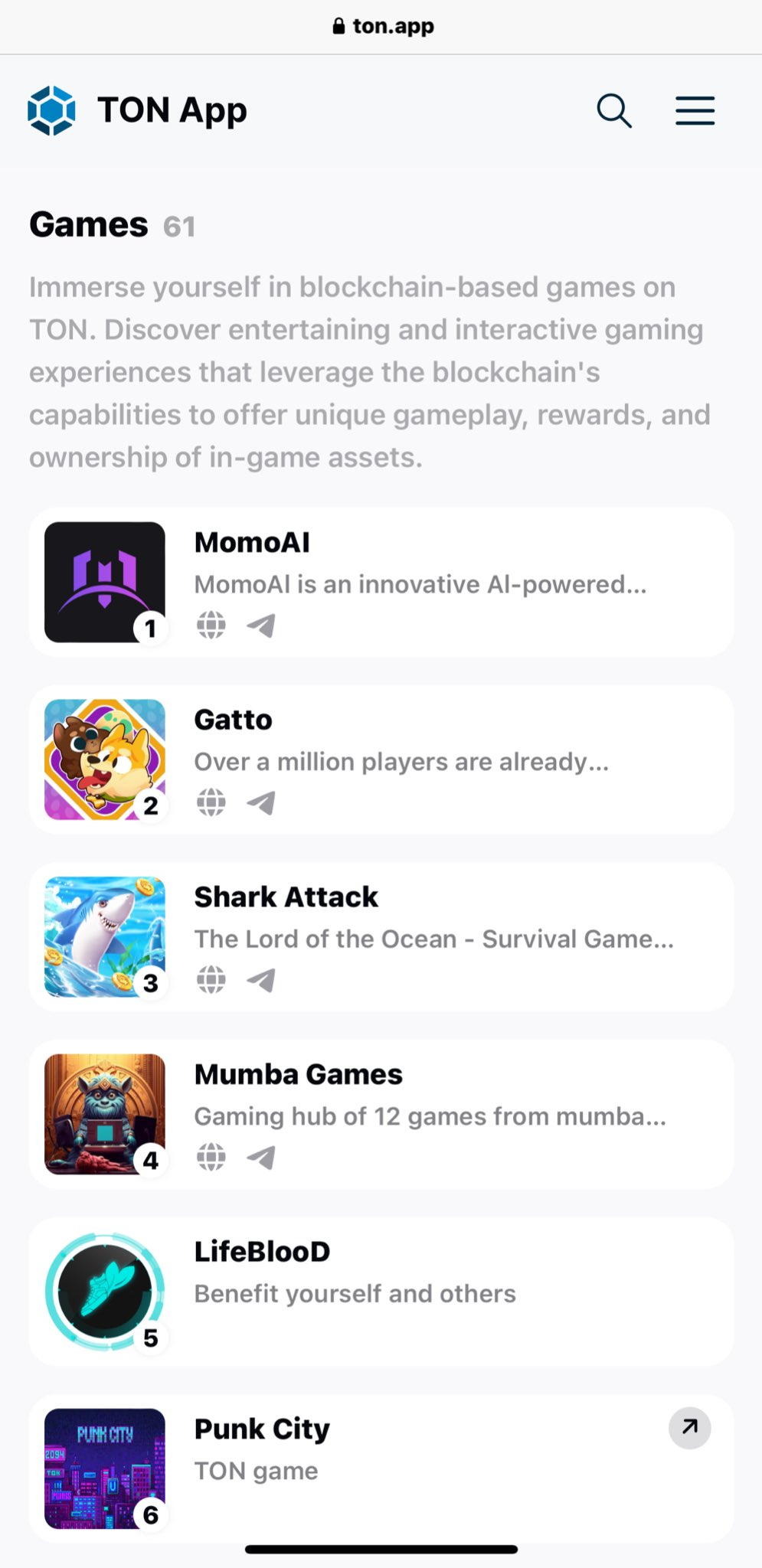
MomoAI: An innovative AI-driven game social growth platform that integrates viral propagation mechanisms and AI-bot interaction technology, focusing on achieving rapid user growth and deep engagement within the Telegram ecosystem.
Its Telegram-based airdrop game MOMO, which has been online for half a month, has already attracted over 500,000 users and has risen rapidly in the active dapp rankings. Public information shows that its project token $MTOS is also set to be listed at the end of April or early May.
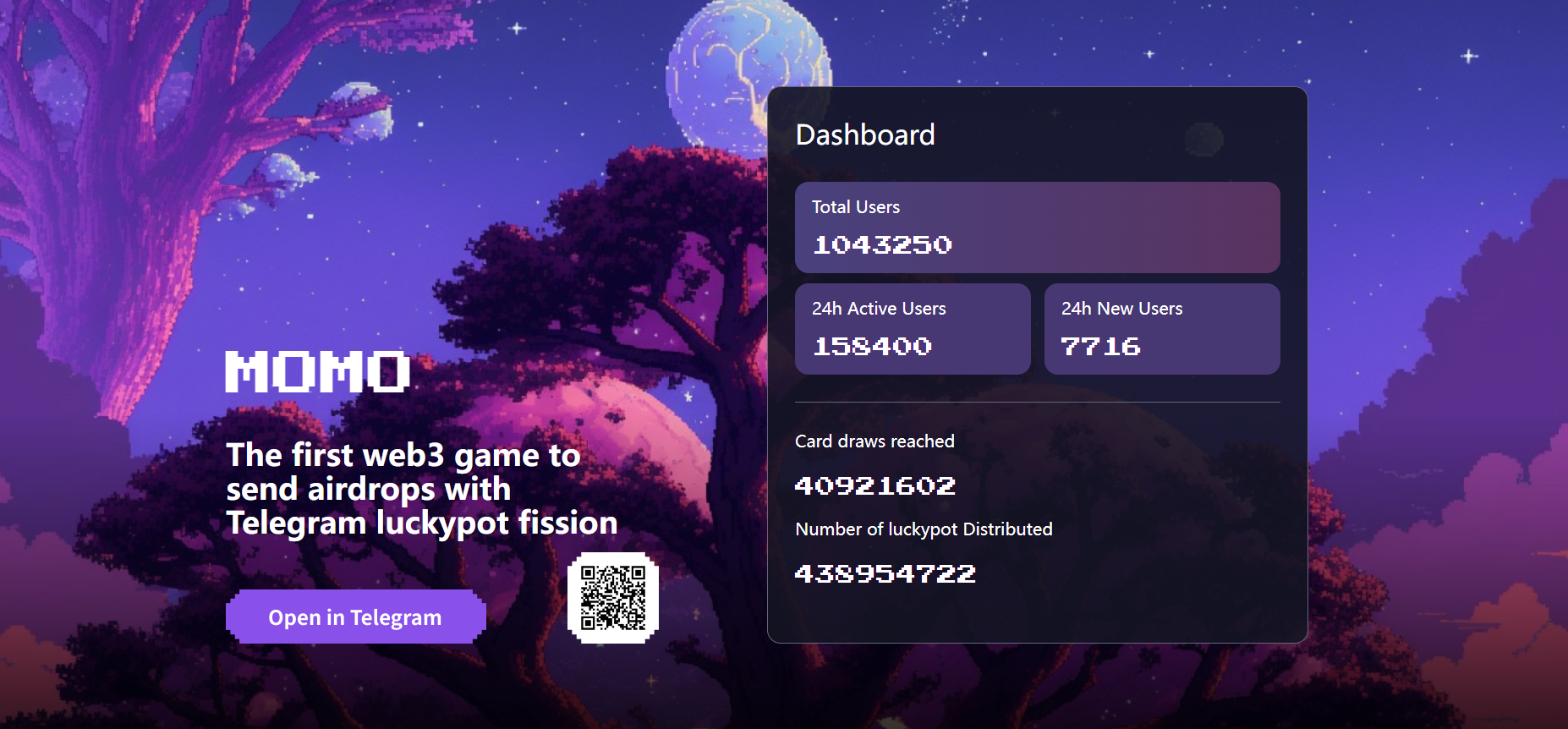
How can a small game inspire such enthusiasm and growth speed? What has MOMO AI done right?
Curiosity aside, we are more interested in whether this growth momentum can be sustained, as the experience in the cryptocurrency world indicates that developing a single game does not have a high ceiling.
What will be the endgame for a small game? How can AI agent technology be used to make a bigger layout and empowerment?
In this issue, we attempt to analyze a front-stage drama about growth and fission from the perspective of MOMO AI's first game, and catch a glimpse of the ambition behind building a game growth platform behind the scenes.
Growth First, Effective Ways to Quickly Acquire Customers
What exactly is MOMO AI?
Before answering this question, perhaps a considerable number of readers have not heard of this name before.
But this is also the reality and cruelty of Web3: Before you start, no one cares who you are; once you start, people only care about your popularity.
Therefore, growth becomes paramount. Web3 is a game of attention economy, and locking users into the product and quickly gaining user increments is the foundation for the evolution and development of all narratives.
When growth becomes the key question for Web3 projects, giving a good answer makes it easier to be remembered.
From this perspective, MOMO AI has already turned in a good answer:
First is the rapid growth of the flagship game. Before the release of the MomoAI platform token, a Telegram-based airdrop game called Momo was launched. Just 14 days after its launch, the user base had already exceeded 500,000, and its on-chain data heat has steadily ranked it in the top 4 of the Solana Dapp (on-chain interaction on Solana) list, jumping into the global Dapp TOP20.
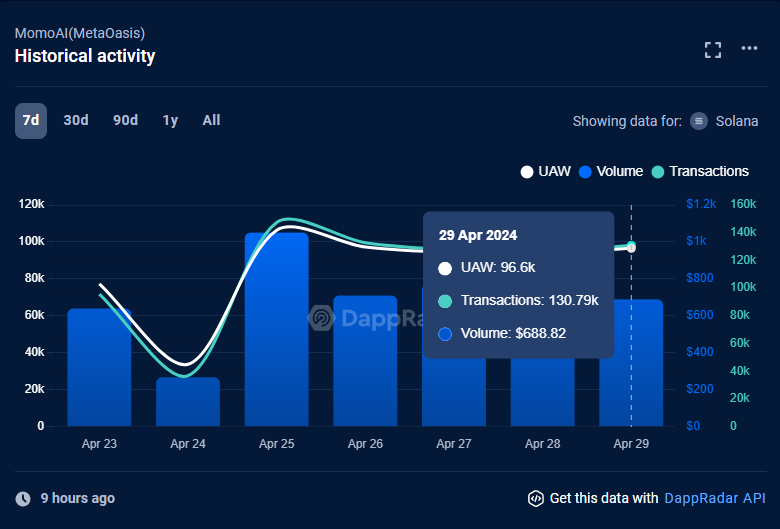
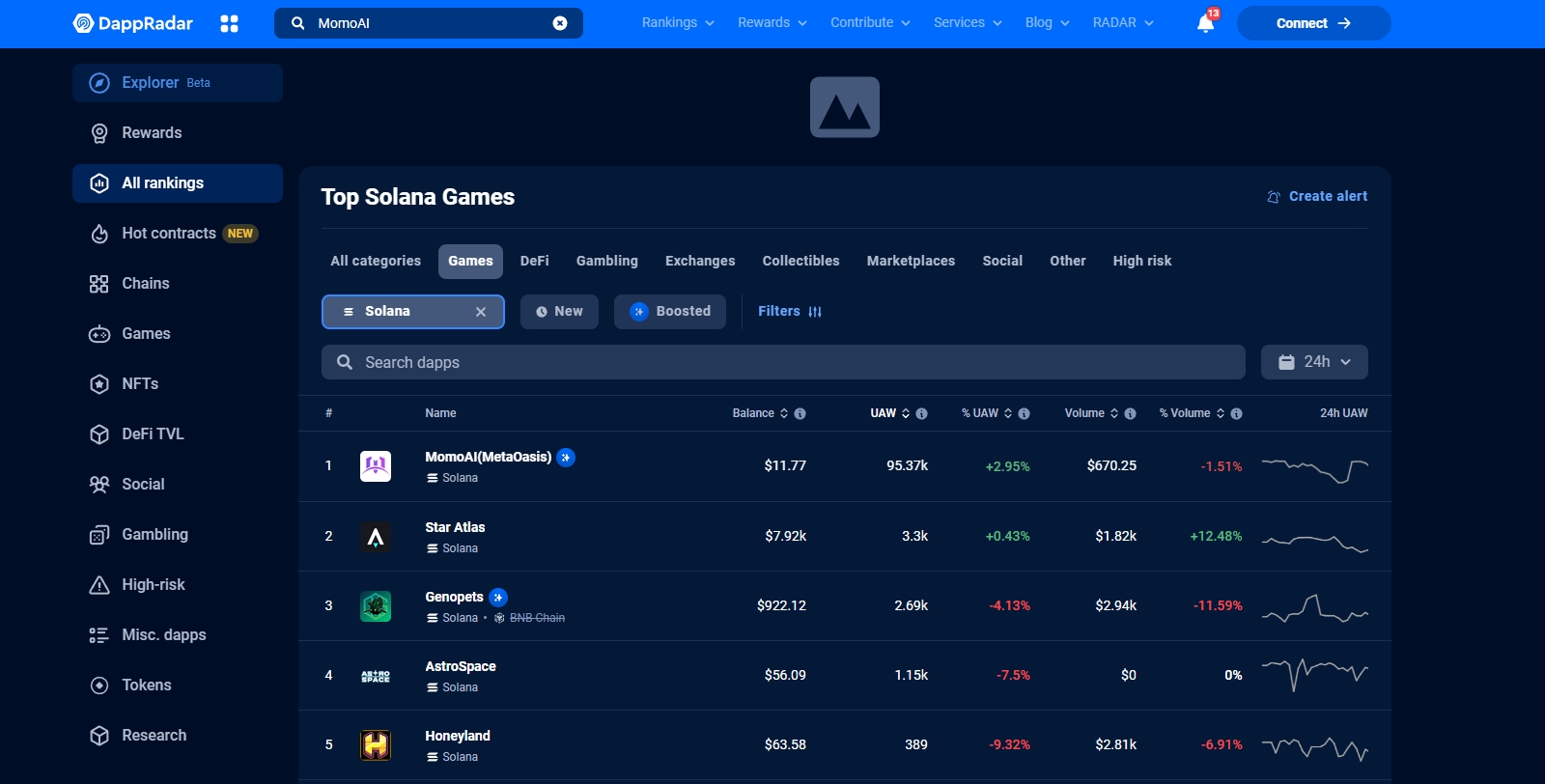
In addition to acquiring new users, the retention data is also noteworthy.
According to related data, Momo's daily game activity has reached 200,000, with a 7-day retention rate of 35% and a 14-day retention rate of 25%, which is quite impressive for a Web3 game.
From the perspective of cold start, fission, and growth, Momo has done well in terms of data indicators. Why has its growth been effective?
We believe the key reason lies in integrating extremely simple interaction, viral fission, and reward expectations.
First, MOMO is a game embedded in Telegram, which can be accessed by triggering BOT commands. For Telegram users, there is almost no learning curve to access the game, and they can start playing with just a click.
The core gameplay of the game is very easy to understand. You can roughly think of it as the Telegram version of "farming" or "Ant Forest":
Plant a tree, continuously collect points called Kiwi, and as the level of the tree increases, the efficiency of producing Kiwi points continues to increase. Eventually, you can exchange Kiwi points for the native token $MTOS of the MomoAI project.
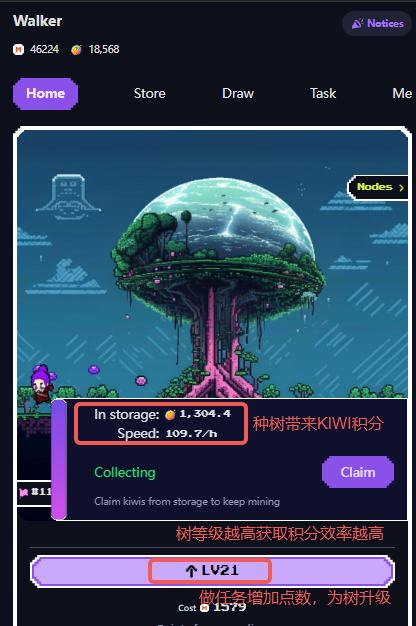
From the core gameplay perspective, the first key feature is extremely simple interaction and low barriers to entry. There is no need for heavy investment of time to "play"; you just need to click to "harvest" points at regular intervals, while also completing tasks to upgrade the tree and earn more points, thus forming a cycle to eventually exchange for the airdrop.
In terms of demand, the purpose of Web3 users playing MOMO is very direct, with economic expectations outweighing game entertainment.
MOMO's design directly hits the key purpose of players—without beating around the bush or setting up barriers, it straightforwardly uses more points and airdrops to reward more contributions. At the same time, during the process of users completing marketing tasks, the game itself quickly fissions to form growth, benefiting from sharing and invitations.
In terms of experience, MOMO becomes a form of light entertainment within the Telegram social environment, with the expectation of profit after simple interaction, allowing players to form a conscious habit of "being more beneficial to oneself by recommending to others without needing to invest too much," and finding a unique ecological niche for Web3 games.
On the operational level, a set of product mechanisms can support the operation of three different user layers.
For users who are willing to spend time and effort, more viral tasks can be designed for them to complete; for users who frequently interact on the chain, the output of Kiwi points increases after claiming, encouraging their interaction behavior; for investment-oriented users, they can also purchase in-game items to obtain more resources to directly increase Kiwi production, satisfying their direct calculation of input-output ratio.
When all three groups are willing to join, user growth and retention will naturally become more significant.
However, the project is named MomoAI, so where is the connection between such a game and AI?
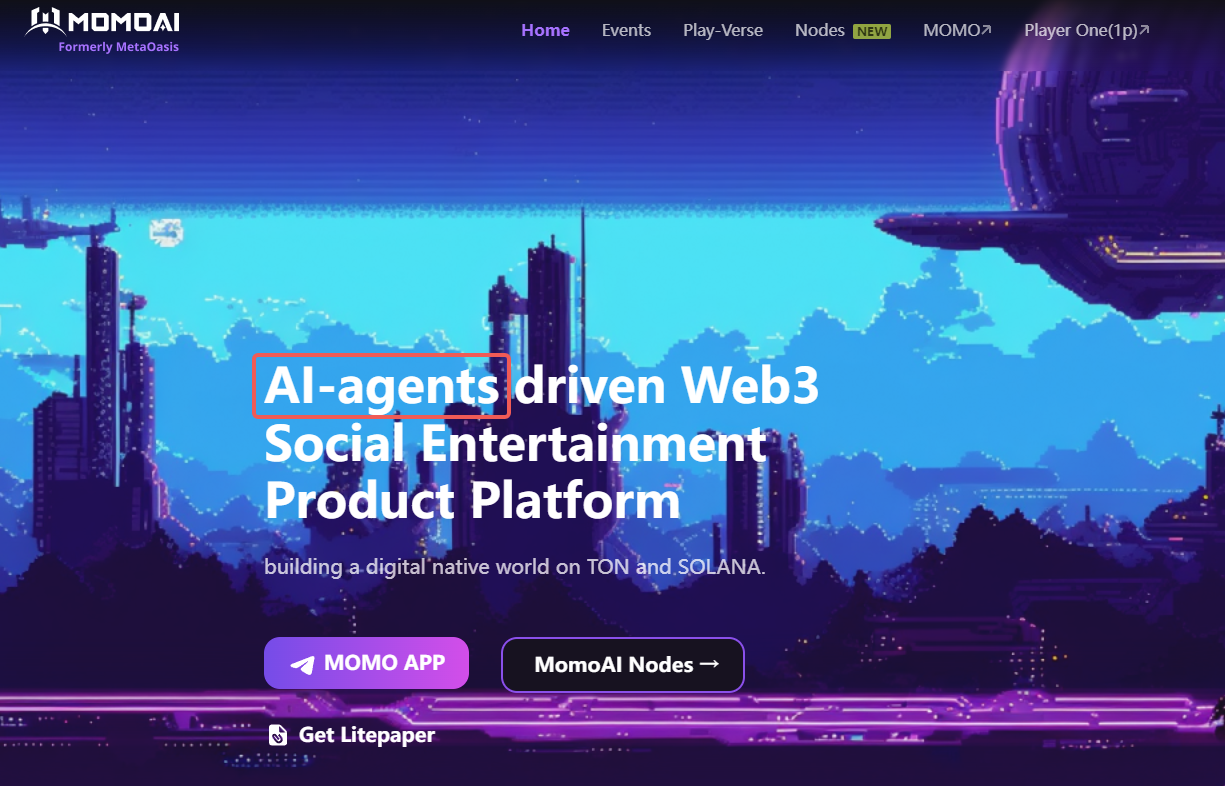
The answer lies in the introduction of AI agent technology, which takes the game interaction experience to a new level.
Whether it's MOMO or other small games on Telegram, they are essentially based on simple fixed commands to exchange airdrops and points, involving a large number of mechanized and procedural steps.
Therefore, while the game skins in the TON ecosystem may vary, their core is basically similar. To stand out in the competition, a small step in interaction could potentially be a big step in acquiring users.
In the game plan for MOMO, there is a design to use AI-BOT for interaction with the game in the later stages, allowing interaction in the game in a natural language manner.
Players can directly input certain phrases to the BOT to complete the main loop of the game, such as "help me collect Kiwi points at 8 o'clock every day" or "help me write a forwarding copy to complete today's task and earn points," transforming fixed commands into more user-friendly conversations.
Of course, this may only be the initial implementation of AI agents, but when AI agents evolve into game assistants, making game operations easier and more intelligent, and subsequently influencing the interaction and performance of different roles in the game, the ceiling for Web3 games will be even higher.
Therefore, MOMO's game may be the first Telegram game to consider using AI agents, which will increase its chances of standing out in the fierce competition among game categories.
In summary, the combination of viral fission and invitation mechanisms, simple gameplay, the TON ecosystem's outbreak, Solana's low transaction fees, and AI expectations have formed the effective way for MOMOAI, this leading game, to quickly acquire users.
Strike While the Iron is Hot: Layout of a Game Growth Platform Empowered by AI Agents and Social Interaction
This game, MOMO, has effectively and rapidly accumulated users, but this does not seem to be the endgame for MomoAI.
MomoAI defines itself more as an "AI-driven game social growth platform." It is clear that a single game cannot stand alone, but MOMO itself has proven the effectiveness of its growth strategy, providing a traceable best practice. It also allows AI agent capabilities to be used on itself, which can be packaged as a universal capability for use by many other games in the future.
Therefore, strategically speaking, the growth experience of a single game is more significant in paving the way for the platform.
If developing the MOMO game was like growing and tasting one's own crops, the next stage is more like seizing the opportunity to give the crops to others, forming a truly AI agent-driven game growth platform with social empowerment.
In simpler terms, it is about opening up capabilities and platforming business.
It is an indisputable fact that the ceiling for a single application in Web3 is low. To promote the ecosystem, there needs to be a larger narrative space and positive expectations.
However, the word "platform" itself is a rather abstract concept. What specific plans does MomoAI have?
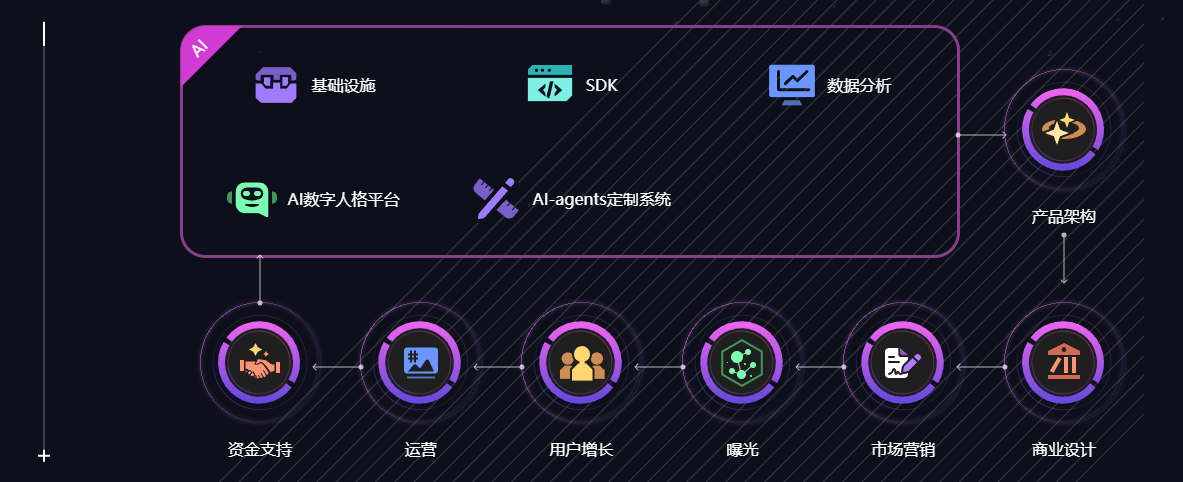
Based on AI agent technology, MomoAI is prioritizing the development of AI agents that can adapt to game scenarios to form a digital artificial intelligence system. When used in games, it can achieve intelligent dialogue, behavioral decision-making, personality expression, and create immersive digital characters and worlds.
Once the capabilities are formed, they can be empowered to developers to provide multi-level technical services:
Integration interface layer: Provide open SDKs and APIs to hide underlying complexity, allowing third-party applications to easily load and call AI agent capabilities, enabling their games to have AI capabilities without starting from scratch.
Digital character generation layer: Equipped with graphic tools, it can effectively build the appearance, personality, background, and other attributes of personalized characters using natural language, simplifying the workload of game project development and improving efficiency.
Functional logic layer: Handles relationship modeling, memory retention for dynamic character evolution, as well as on-chain identity and asset management to provide persistence.
Basic technology layer: Supports language content generation through large-scale language models and on-chain identity verification through blockchain.
After the different levels of technical services are opened up by the MomoAI platform, game characters with rich personalities and emotions can be empowered to have verifiable on-chain identities and asset ownership, providing an unprecedented immersive experience for interactive entertainment.
In addition to technology, MomoAI will also provide various designs for projects in terms of funding, operations, user growth, exposure, marketing, and project economics, to comprehensively assist in the growth and innovation of game projects in terms of traffic, products/tokens, and AI technology.
Such a platform role is more like a game growth engine that drives the development of the entire industry, encapsulating key dynamics within the engine, making different vehicles run faster.
Currently, the platform construction of MomoAI is evolving from 1.0 to 2.0.
Before officially entering 2.0, MomoAI is accumulating resources in the form of a game release platform. In fact, it has already solved the problem of "who to sell the capabilities to."
As game releases are more channel-oriented, MomoAI can also reach more Web3 game developers. According to the official website, 25 Web3 games have already joined the MomoAI Play-verse game release platform, including major titles such as DeFi Kingdom and Big Time, and the demand for applications is still increasing.
These developers and projects will become powerful partners for MomoAI 2.0. Under the same AI agent capability open mode, MomoAI can undertake tasks in multiple aspects such as technical empowerment, release, promotion, and marketing, thereby forming a complete game matrix within the platform ecosystem.
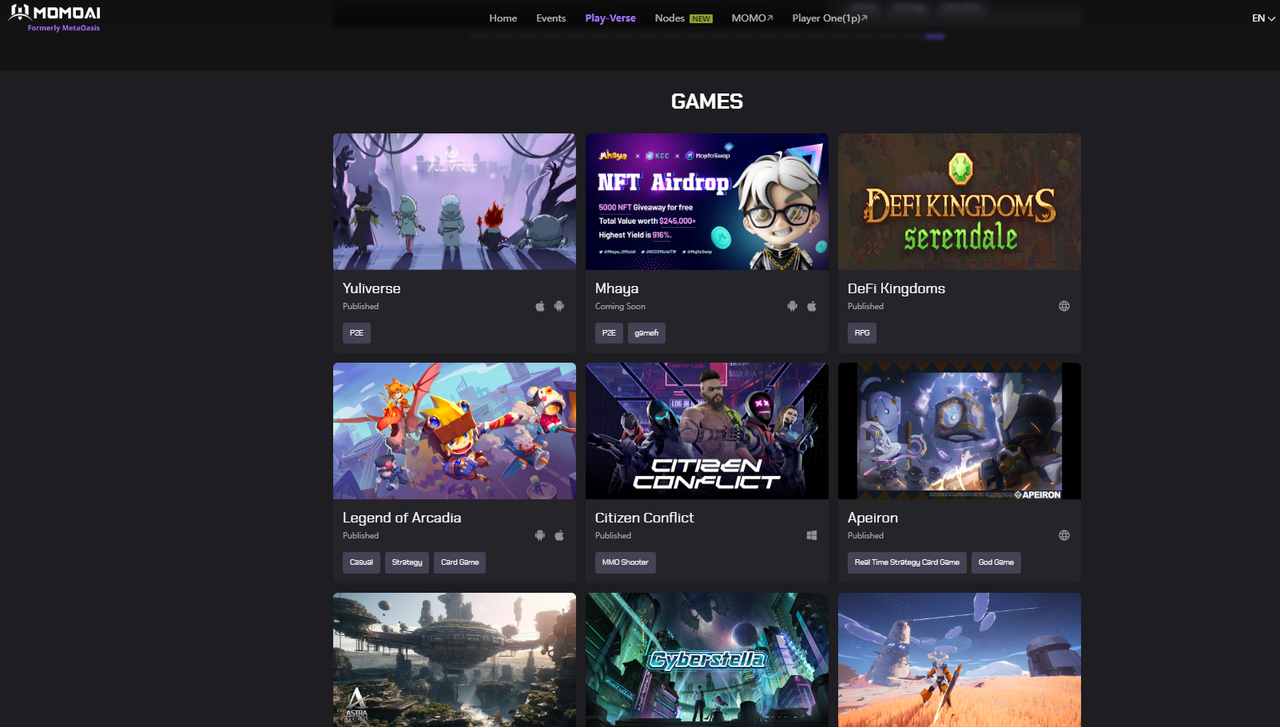
Therefore, under the platform strategy, the native token $MTOS of MomoAI is no longer just a pure reward airdropped in a single game, but more of a link in the player and developer ecosystem that the platform can cover.
For players, the MTOS token becomes a circulating token within the platform, the main token for participating in various ecosystem sub-games. Players can use MTOS to obtain assets in cross-platform products.
For developers, MTOS can be used to purchase AI customization and data analysis services provided by the MomoAI platform. In addition, developers can use MTOS to purchase advertising space, host events, and promote effective user acquisition strategies within the platform ecosystem.
When both the B-side and C-side are connected by MTOS, the token can actually capture more value in the entire platform ecosystem, indirectly promoting token consumption and having a certain promoting effect on the token price itself.
Growth is an eternal proposition for Web3 projects, and game-related projects are briefly absent in the current cycle.
The appearance of MomoAI has proven the effectiveness of its growth model through its own game, and it is attempting to further develop the entire game track through the planning of a game growth platform.
When technologies such as AI agents aim to make encryption better, the improvement of the game experience may be the most easily perceptible improvement for users. Beyond the hot narrative, there is actually a highly non-consensus opportunity here.
Sometimes, new opportunities do not necessarily require new entrants to do them. Veterans who have been immersed in the industry for a long time and understand the projects and pain points of users are actually more likely to enter.
MomoAI's predecessor is MetaOasis, which has ample experience in the construction of the metaverse, AI, and game ecosystems. At this stage, its brand transformation into MomoAI is not simply a consideration of marketing heat, but more of a strategic direction and within reach.
Having the ability to do so, starting with trying out its own products and then empowering the industry, is the correct and appropriate thinking and execution path.
In the cryptocurrency world, there are new directions and narratives every day; and projects that choose the right path, position themselves accurately, and have the strength are always worth paying attention to as Alpha.
免责声明:本文章仅代表作者个人观点,不代表本平台的立场和观点。本文章仅供信息分享,不构成对任何人的任何投资建议。用户与作者之间的任何争议,与本平台无关。如网页中刊载的文章或图片涉及侵权,请提供相关的权利证明和身份证明发送邮件到support@aicoin.com,本平台相关工作人员将会进行核查。




